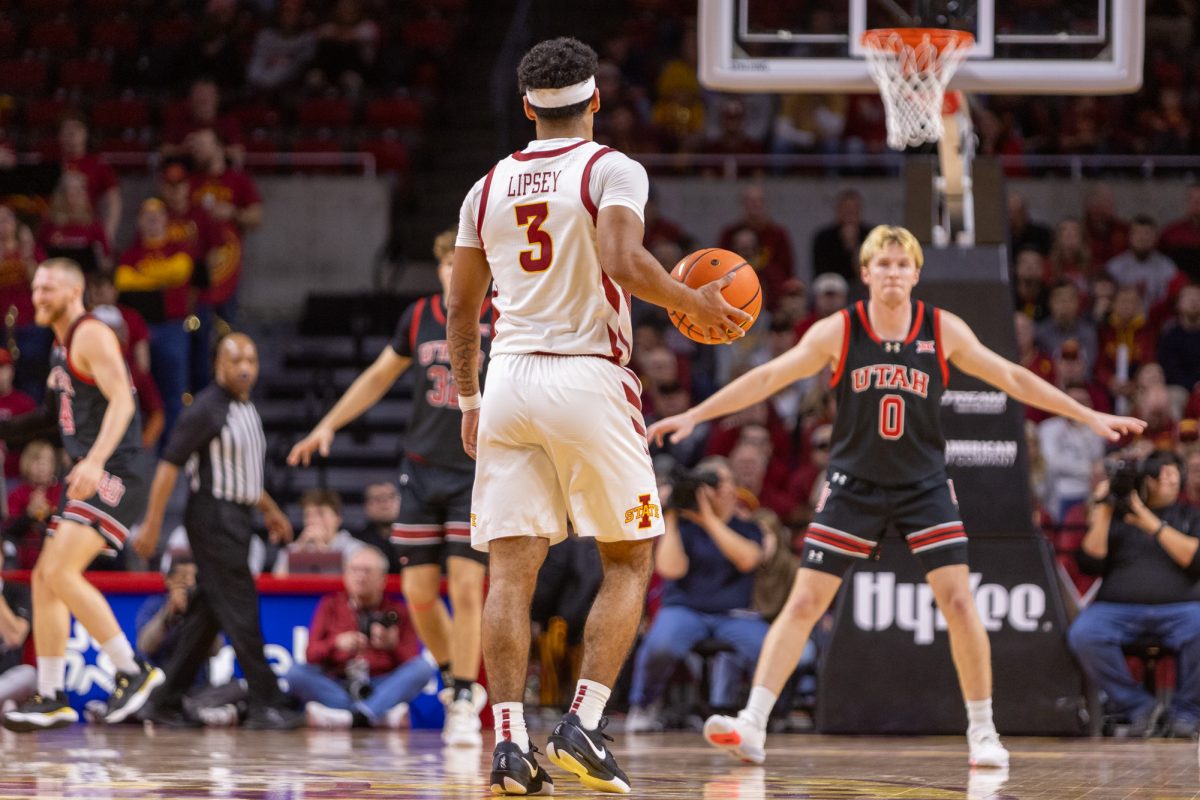Barnanza
April 26, 2006
Musicians know music can be created anywhere. From the glory of the stage, to the cheap acoustics of the modern bathroom, musicians have discovered the unique advantage of almost every possible locale.
For Ames-based folk ensemble The Barn Owl Band, one particular venue will always reserve a special particular recognition, its namesake icon of rural life and temple of agriculture – the barn.
“Especially in rural Iowa and Missouri, they had barns and on Saturday night they would clear out the hay and whatnot, somebody would play fiddle or a banjo, maybe a guitar player, and they would do what we would call square dancing or contra dancing,” said Marty Miller, professor emeritus of sociology and standup bass player.
FASTTRAK
What: The Barn Owl Band
Where: Octagon Center for the Arts, Main Gallery
When: 3 to 5 p.m. Sunday
Cost: Adults $8, children 12 and under free
The band has a 15-year legacy in central Iowa. The group first assembled as the house band for the Central Iowa Barn Dance Association. Community members were interested in creating an event to indulge their love of old-time music through the tradition of the community barn dance. The band’s seven members come from four different central-Iowa counties and assemble regularly each month to play and bring rural tradition to life.
At its inception, the band was known as Harmonic Convergence and played almost exclusively at club events. Dance step caller Roger Alexander, associate professor of mathematics, was put in charge of recruiting the original band.
“One of the things that I did was that I promised them that if they played a show we would pay them five bucks,” Alexander said. “It’s because of their dedication to the music that they played along anyway.”
The band performs an assortment of instrumentals and songs from a variety of traditions. Old-time American music is complemented by its influences in Celtic, Swedish and even Israeli traditions. The all-acoustic lineup features mandolin, fiddle, penny whistle, guitar and standup bass as well as many other instruments.
Miller said it is the rhythm and not the volume that makes traditional dance music so infectious.
“The melodies are not complex. They’re the kind of things that you instantly remember and you can kind of whistle and hum,” Miller said. “There’s nothing more exciting than you’re playing along and all of the sudden the fiddles come in.”
Barn dancing requires more than pulse-inducing rhythms. Band members confess an overt agenda to start toes tapping and heads nodding along with the melody.
Alexander said inciting listeners to become dancers is the fuel that drives the musicians to play and create the most contagious social atmosphere possible.
“There’s a give and take, or what you might call a feedback loop between the dancers and the musicians,” Alexander said. “You know you are playing well when you see how the dancers react to what you do.”
For beginners, taking the dance floor is usually a choice made with a certain amount of trepidation. Miller said, however, curious parties should never scorn the dance floor for want of moves or a partner. Dance callers, experienced in working with nervous amateurs, are an integral part of every The Barn Owl Band performance.
“It takes a few minutes, just to walk you through,” Miller said. “You know, this is what you do then, ‘Okay,’ the caller turns to the band and boom, the groups go.”
Fiddle player Alice McGary grew up learning violin and fiddle techniques from a number different traditions. She said playing with the band has exposed her to even more influences while indulging her special interest in American dance music.
“I like American music in a million different ways,” McGary said. “I like the way the cultures came together and the blending of styles.”
In 2002 the band’s down-home rural sound became a nationally and internationally recognized sensation. The group was invited to play on the internationally broadcast, old-time themed radio program, “A Prairie Home Companion.”
The live on-air performance instantly caught the attention of traditional music lovers across the world, flooding the band with dance and concert requests. “Cloud Forest,” an instrumental piece created by former band member and former ISU professor Mike Bell, became an overnight hit which stunned audiences – literally.
“One guy called, he said he had to stop his car, he was listening to it in his car, because he thought he was going to get in an accident,” Miller said. “He was driving and he wasn’t paying any attention.”
The group’s experience on Prairie Home Companion helped make “Cloud Forest” the band’s signature piece. The song, as well as other pieces, has received sporadic radio play, and “Cloud Forest” will be the title track for the band’s upcoming third album.
The Barn Owls have never limited their roster to a fixed lineup. New members are constantly in training through a group apprenticeship program. Apprenticeship is open to any musician curious about old time or traditional music.
“They can sit in and see if they like the music and eventually they may become part of the band,” Miller said.
Barn dances are a tradition that go back generations, but Miller said some of the sounds and melodies go even further into the past. Many of the most popular old-time tunes from Celtic and other traditions have no recognized composer or author. A sense of shared history is one of the characteristics that endears listeners to traditional music.
“You will hear a song, and you might know the song but it is similar to something you’re mother used to sing or you remember somewhere,” McGary said. “It recalls so much of our own culture.”
Despite the success of “Cloud Forest,” and the anticipation of a new studio album the members of the band are content to create their music as a hobby and continue providing exciting dance music on a local scene. Although they occasionally play other states around the Midwest, Alexander said the band members have no ambition to become a globetrotting international act.
“After we named ourselves [after] the barn owl we decided to learn some things about it,” Alexander said.
“One of the things that we learned is that it is a species that sort of stays around home,” he said. “Our home is in Iowa and we sort of play around here.”






